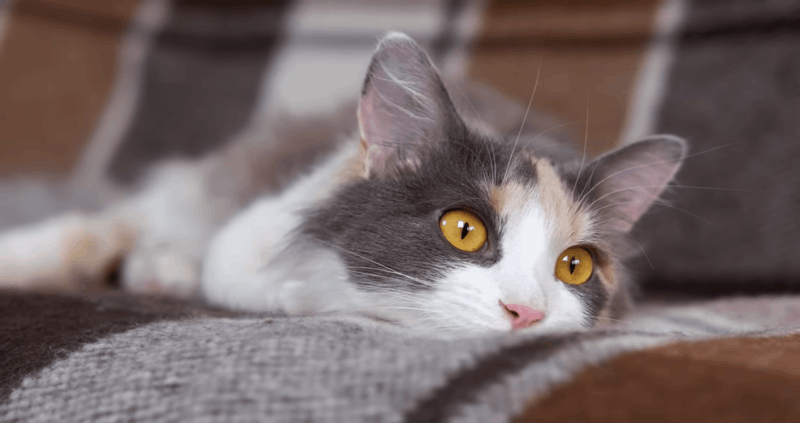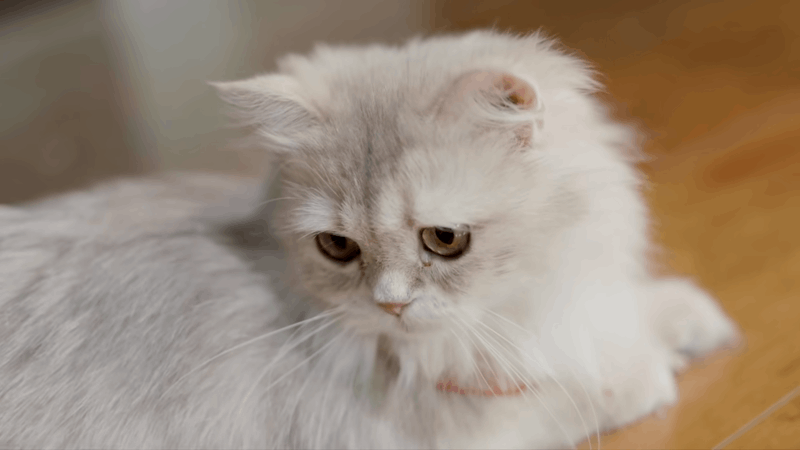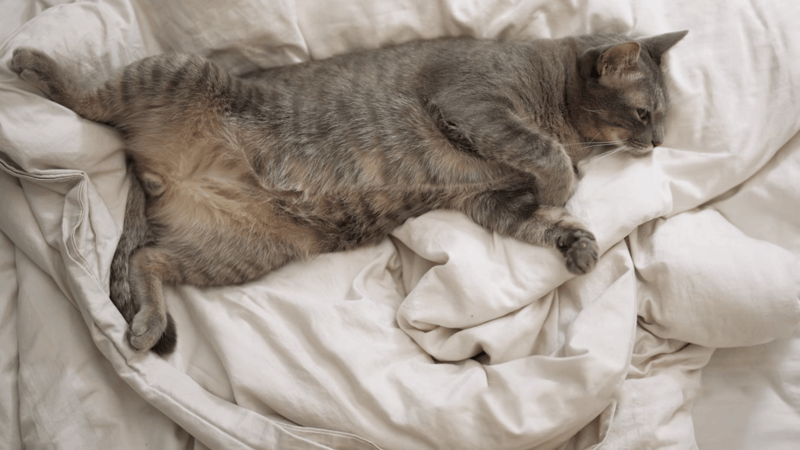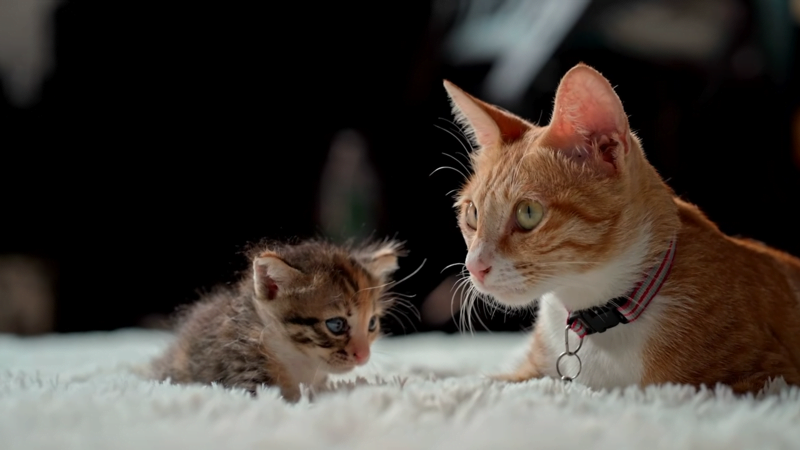No products in the cart.
Dehydration in cats is a serious but often overlooked health issue that can lead to severe complications if not addressed. Cats naturally tend to drink less water, which makes them more prone to dehydration, especially during hot weather or illness.
To protect your cat from the risks of dehydration, the causes, symptoms, and essential tips will be explored in this blog.
Understanding Dehydration in Cats

When a cat’s body loses more fluids than it takes in, it might become dehydrated, which can affect electrolytes and other essential body processes. Inadequate water intake, illness, or environmental conditions are some of the possible causes of this. It may have negative effects on a cat’s health if left untreated.
What Causes Dehydration in Cats?
There are various reasons why cats get dehydrated; factors such as their environment, underlying health conditions, or dietary habits often play a significant role.
- Inadequate water intake: Cats may not drink enough water, especially if they rely on dry food or dislike their water source.
- Hot weather: High temperatures can lead to increased fluid loss, especially in outdoor or active cats.
- Chronic illnesses: Diabetic renal disease, hyperthyroidism, and diabetes can all lead to increased urine and fluid loss.
- Increased physical activity: Active cats may lose more fluids through exertion and panting.
- Vomiting or diarrhea: Gastrointestinal issues can quickly deplete a cat’s fluids, leading to dehydration.
You can prevent dehydration and ensure your cat stays hydrated, especially in hot weather or if they have underlying health issues by recognizing these causes.
Signs of Dehydration in Cats
Recognizing the signs of dehydration in cats is essential for early intervention:
- Lethargy: Reduced energy levels and unusual tiredness.
- Sunken eyes: Eyes may appear dull or recessed.
- Dry mouth and gums: Gums feel dry or sticky, and may appear pale.
- Decreased skin elasticity: Skin takes longer to return to normal when pinched.
- Loss of appetite: Dehydrated cats often show reduced interest in food.
- Increased heart rate: A possible sign in severe cases, indicating the body’s effort to maintain blood pressure.
Understanding these detailed signs of dehydration in cats can help you take timely action to ensure your pet remains healthy and hydrated.
How to Check for Dehydration in Cats?
To check if your cat is dehydrated, you can perform a simple skin turgor test: gently pinch the skin at the back of your cat’s neck and then release it. In a well-hydrated cat, the skin should quickly return to its normal position. If the skin takes a long time to return or remains in a tented shape, this indicates dehydration, and you should consult a veterinarian for further evaluation and treatment.
Can Cats Get Dehydrated in Hot Weather?
In hot weather, cats can become easily dehydrated, particularly if they are left out in the heat without drinking enough water. To avoid dehydration and preserve cats’ general health during the warmer months, it is crucial to make sure they always have access to cool, fresh water because the heat increases their body’s fluid loss.
How Much Water Should a Cat Drink?

Diet, age, and activity level are the factors that can be used to determine the amount of water a cat needs. A cat should drink 3.5 to 4.5 ounces of water for every 5 pounds of body weight on average each day. This includes both direct water intake and moisture from food. To maintain proper hydration and overall health, it is crucial to ensure your cat meets this requirement.
Can Cats Get Enough Water from Wet Food?
Wet food contains about 70-80% moisture, which can significantly contribute to a cat’s daily water intake. Cats that eat wet food may not need to drink as much additional water compared to those on dry food diets. However, it’s still important to provide fresh water at all times, as cats may still need to drink to fully meet their hydration needs.
Why Is My Cat Not Drinking Water?
A cat may not be drinking water for a number of reasons. Some cats are particular about the cleanliness or temperature of their water, preferring fresh, cool water over stagnant water. The location of the water bowl or the presence of stressors are the environmental factors that can also deter a cat from drinking. A decrease in water intake can be caused by health issues like dental problems or underlying medical conditions.
How to Treat Dehydration in Cats at Home?

Treating dehydration in cats at home can be done with the following steps:
- Encourage water intake: Offer fresh, clean water frequently and consider using a water fountain to make it more appealing.
- Switch to wet food: Increase the amount of wet food in your cat’s diet to help boost their fluid intake.
- Add water to food: Mix a small amount of water or broth (without onions or garlic) into your cat’s food to encourage them to consume more fluids.
- Offer electrolyte solutions: Provide cat-specific electrolyte solutions (consult your vet for recommendations) to help restore fluid balance.
- Monitor progress: Keep an eye on your cat’s behavior and hydration status; if there’s no improvement, seek veterinary care immediately.
You can help manage mild dehydration at home by following these steps, but it’s important to act quickly and consult a vet if the condition does not improve.
Preventing Dehydration in Cats

To prevent dehydration in cats, it’s essential to ensure they always have access to fresh water, provide a diet rich in moisture, and be particularly vigilant during hot weather or when your cat is unwell. Regularly monitor their water intake and make adjustments to their environment or diet to encourage proper hydration.
Tips to Encourage Your Cat to Drink Water
It is so important to encourage cats to drink more water which can prevent dehydration. Here are some effective tips:
- Use a water fountain: Cats are naturally drawn to moving water, so a fountain can make drinking more appealing.
- Place multiple water bowls: Having several water bowls around the house increases the likelihood of your cat drinking more often.
- Keep water bowls clean: Regularly cleaning and refilling water bowls ensures the water is fresh and attractive to your cat.
- Offer wide, shallow bowls: Cats may prefer wide, shallow bowls that don’t touch their whiskers, making drinking more comfortable.
- Add flavor to water: A little tuna juice (without salt) or low-sodium broth can make water more enticing for your cat.
In addition to these tips, exploring natural remedies and supplements can also support your cat’s hydration and overall health. Pet CBD Club offers a range of high-quality products that can complement your efforts in keeping your cat healthy and hydrated.
How to Ensure Your Cat Stays Hydrated?
Ensuring your cat stays hydrated requires a combination of dietary adjustments and environmental changes:
- Incorporate wet food: Adding wet food to your cat’s diet boosts their moisture intake significantly.
- Add water to dry kibble: Mixing water or broth with dry food can help increase your cat’s fluid intake.
- Monitor water intake: Keep track of how much water your cat drinks daily to detect any changes in their hydration.
- Provide extra water sources: During hot weather or when your cat is ill, offer additional water sources to prevent dehydration.
- Consult a vet if necessary: If your cat shows signs of dehydration or isn’t drinking enough, seek advice from your veterinarian.
Your cat’s proper hydration and overall health can be maintained by following these steps.
Conclusion
Dehydration in cats is a serious condition, but with the right knowledge and proactive care, it’s entirely preventable. The health and hydration in your cats can be kept by recognizing the signs, ensuring consistent access to fresh water, and incorporating moisture-rich foods into their diet. To ensure cats live a long and happy life, it is so crucial to keep them well-hydrated.
Hello, I am Hazel Bennett, an experienced copywriter specializing in the fascinating topic of CBD for dogs. With a passion for pet wellness and extensive knowledge of CBD’s potential benefits, I am here to provide you with informative and engaging content.



